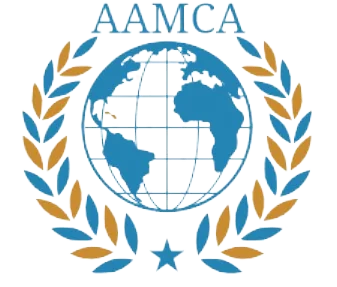The Importance of the Beijing 30 Action Agenda
The Beijing 30 Action Agenda, launched in 2025 to commemorate the 30th anniversary of the pivotal Beijing conference, represents a renewed commitment to achieving gender equality globally. This agenda builds on the progress made since 1995, a period that has seen significant milestones in women’s rights and gender equity. The original conference laid crucial groundwork, highlighting the need for systemic changes and establishing a global framework for action. It set the stage for subsequent actions, such as the adoption of UN Security Council Resolution 1325, which underscored the importance of women’s participation in peace and security processes.
Reflecting on the advancements over the last three decades reveals a mixed landscape. While there have been notable improvements in women’s access to education, economic opportunities, and political representation, many challenges remain, including pervasive gender-based violence and insufficient reproductive rights. The Beijing 30 Action Agenda aims to address these gaps by outlining specific targets and strategies designed to empower women and girls. It serves as a call to action for governments, civil society, and the private sector to collaborate more effectively in overcoming obstacles to gender equality.
The implications of this agenda are profound. By setting measurable goals and promoting accountability, the Beijing 30 Action Agenda seeks to foster a global environment where gender equality is viewed not merely as a lofty aspiration but as a fundamental human right. This encourages wider recognition of the benefits that gender parity brings to society as a whole, including economic growth and community well-being. As the world grapples with ongoing challenges such as climate change, political instability, and health crises, the aspirations outlined in the Beijing Action Agenda remain more relevant than ever, making it essential that concerted efforts continue in the pursuit of gender equality.
Current Challenges Facing Women and Girls
Globally, women and girls face numerous challenges that undermine their rights and hinder their progress. Violence against women remains pervasive, manifesting in various forms such as domestic abuse, sexual violence, and human trafficking. According to the World Health Organization, approximately 1 in 3 women worldwide have experienced physical or sexual violence in their lifetime, indicating an urgent need for effective interventions and protective measures.
Gender inequality continues to be a significant barrier to women’s empowerment. This inequality is evident across various sectors, including education, employment, and political representation. Despite progress over the decades, women still occupy only 25% of parliamentary seats globally, as reported by the Inter-Parliamentary Union. This underrepresentation limits their ability to influence policies that directly affect their lives, perpetuating cycles of exclusion and disadvantage.
The impact of armed conflict also disproportionately affects women and girls, exposing them to increased risks of violence, displacement, and exploitation. In conflict zones, reports indicate that women and girls are often targets of sexual violence used as a weapon of war. Furthermore, they bear the brunt of economic hardships and loss of livelihoods as communities are torn apart. The United Nations has highlighted that during conflicts, the participation of women in post-conflict recovery and governance is crucial for sustainable peace, yet their involvement remains insufficient.
In addition to these alarming statistics, personal narratives underscore the deeply ingrained nature of these issues. Women in various communities frequently recount experiences of discrimination and violence that shape their lives. These first-hand accounts amplify the need for comprehensive solutions that tackle the root causes of gender inequality and ensure a secure environment for women and girls. It is clear that despite advancements in certain areas, significant challenges remain, calling for a renewed commitment to championing gender equality.
The Role of the United Nations and Member States
The United Nations (UN) plays a pivotal role in promoting gender equality globally, facilitating various initiatives designed to support member states in their efforts to create equitable societies. Central to this mission is the Gender Equality Acceleration Plan, a strategic framework aimed at assisting countries in fast-tracking their commitments to gender equality. This plan outlines specific actions member states can take to eliminate barriers to gender parity, ensuring equitable access to resources, opportunities, and participation in decision-making processes.
Furthermore, the UN has launched the Clarion Call, a national campaign that seeks to mobilize political will and resources towards achieving gender equality. This initiative not only emphasizes the critical need for collaboration among member states but also highlights the importance of integrating gender considerations into all development efforts. It serves as a clarion call for governments to put gender equality at the forefront of their policy agendas, ensuring that women’s rights and needs are prioritized alongside broader development goals.
Member states play a vital role in the implementation of these initiatives. They are encouraged to commit to measurable targets and report on their progress. It is essential for governments to not only endorse international agreements that support gender equality but also to translate these commitments into actionable strategies on the ground. This collaboration is crucial for creating an environment where gender equality is regarded as a fundamental component of sustainable development, rather than as an optional addition. The ongoing support from the United Nations is instrumental in guiding these efforts and fostering an atmosphere of accountability among its member states.
In conclusion, the collaboration between the United Nations and member states is crucial for advancing gender equality worldwide. By adhering to their commitments and actively engaging in initiatives such as the Gender Equality Acceleration Plan and the Clarion Call, they can collectively work towards a future where gender equality is integrated into all aspects of development.
A Collective Call to Action for the Future
The pursuit of gender equality is not merely a goal; it is an imperative that demands unified action from all sectors of society. As we look toward the future, it becomes increasingly clear that achieving this fundamental principle requires a comprehensive approach—one that integrates gender considerations into the very fabric of sustainable development. From climate justice initiatives to poverty eradication strategies, recognizing the intersectionality of gender within these realms is critical.
Addressing gender equality must involve collaborative efforts among governments, non-profit organizations, businesses, and individuals. Each sector possesses unique strengths and resources that can drive progress. Governments, for instance, are positioned to create and enforce policies that guarantee equal access to education, healthcare, and economic opportunities. Non-profit organizations serve as champions of advocacy, raising awareness and mobilizing communities to cultivate a culture of respect and equality. Meanwhile, businesses have the ability to influence societal norms through equitable hiring practices and by fostering inclusive workplace environments.
This collective action should extend to every level of decision-making, ensuring that gender perspectives are embedded in strategies addressing environmental sustainability, economic growth, and social justice. It is particularly urgent in the context of climate change, where women often bear the brunt of its impacts yet possess valuable knowledge for mitigation and adaptation. Integrating gender considerations into climate action is not only just but essential for resilience and responsiveness.
Transforming commitments into tangible impacts demands sustained efforts and accountability. We need a shared vision where gender equality is not an afterthought or a mere checkbox but a guiding principle in all our endeavors. Together, we can create a world where gender equality is not a distant goal, but rather a fundamental reality. The time for decisive and collective action is now.




